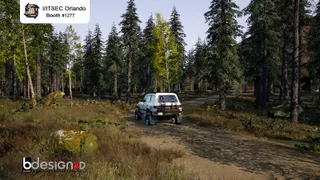NMSG 2017 Symposium
Contact Our Team
For more information about how Halldale can add value to your marketing and promotional campaigns or to discuss event exhibitor and sponsorship opportunities, contact our team to find out more
The Americas -
holly.foster@halldale.com
Rest of World -
jeremy@halldale.com

NMSG Chairman Leigh Yu congratulates Ryan Philip Spicer (University of Southern California) on his award-winning paper. Image credit: NMSG.
The 2017 NATO Modelling and Simulation Group (NMSG) Symposium on M&S Technologies and Standards for Enabling Alliance Interoperability and Pervasive M&S Applications was held on 19 and 20 October 2017 in Lisbon, Portugal. The conference was jointly chaired by Wim Huiskamp (TNO, NL) and Lt. Col. Rui Magalhaes (MoD), PT). In total, 93 people from 20 countries came, which not only attests the relevance that many nations attach to the conference theme, but also the high expectations potential participants place on the meeting in general.
In his national keynote, Carlos Felix from the Portuguese government owned company EMPORDEF spoke about the dilemma industrial decision makers often face: In House Solutions vs. COTS. Both, the author and the audience came to the conclusion that there is no universal answer, and that user requirements must always be the driving factor.
Dr. Andreas Tolk from The MITRE Corporation has been invited to talk about interoperability and composability. "Interoperability, the ability to exchange data and services, is well understood in the community," he said. "The idea of composability still needs to be fully incorporated."Composability requires the conceptual alignment of all systems: if information is requested from the composition, the answer must be the same, no matter which component is delivering it. In practice, this means: While interoperability enables fair fight situations, composbility ensures fair fight situations.
Altogether 19 selected papers were presented in five sessions:
- Emerging M&S Technologies and Capabilities looked at virtual and augmented reality and cloud computing. Special interest was given to M&S as a Service (MSaaS).
- M&S to Support Operations focused on operational use cases that benefit from M&S. A common factor is the use of artificial intelligence (AI) in booth training and operation.
- M&S to Support Capability Planning considered examples of how system performance could be evaluated within the system of systems, even before specific hardware exists.
- Modelling Sensors and Environments looked at current efforts and research that provide immersive training for operators.
- M&S Interoperability Improvements informed on the new and improved HLA certification process, and the Urban Combat Advanced Training Technology (UCATT), which provides training to NATO troops.
The presentation held by Ryan Philip Spicer from the University of Southern California on the second day, was significant in several respects. In his paper One World Terrain and Beyond, Spicer describes a project, which is creating exciting virtual worlds for small team training, by using real world data, like photos or videos that can be collected by soldiers, drones, or other means. The excellent paper earned Spicer the NMSG Young Scientist Award. The reward is one measure of NATO's Science & Technology Organisation to attract younger people (under 35) to the MSG network.
The objective of this symposium was to give an overview of current NATO M&S activities for the development and effective employment of M&S. Some contributions and the following discussions showed potential for new research challenges: MSaaS, e.g. is much more than the technology; conceptual problems must still be solved. Another observation is that NATO experts are very focused on the applications and simulation models. Whether the IT infrastructure will still be able to meet the highly dynamic, data-intensive demands of the new 5th generation weapon systems is an open question that NATO has to answer as well.
These new challenges may be discussed at the next symposium, scheduled for 11-12 October, 2018 in Ottawa, Canada.


